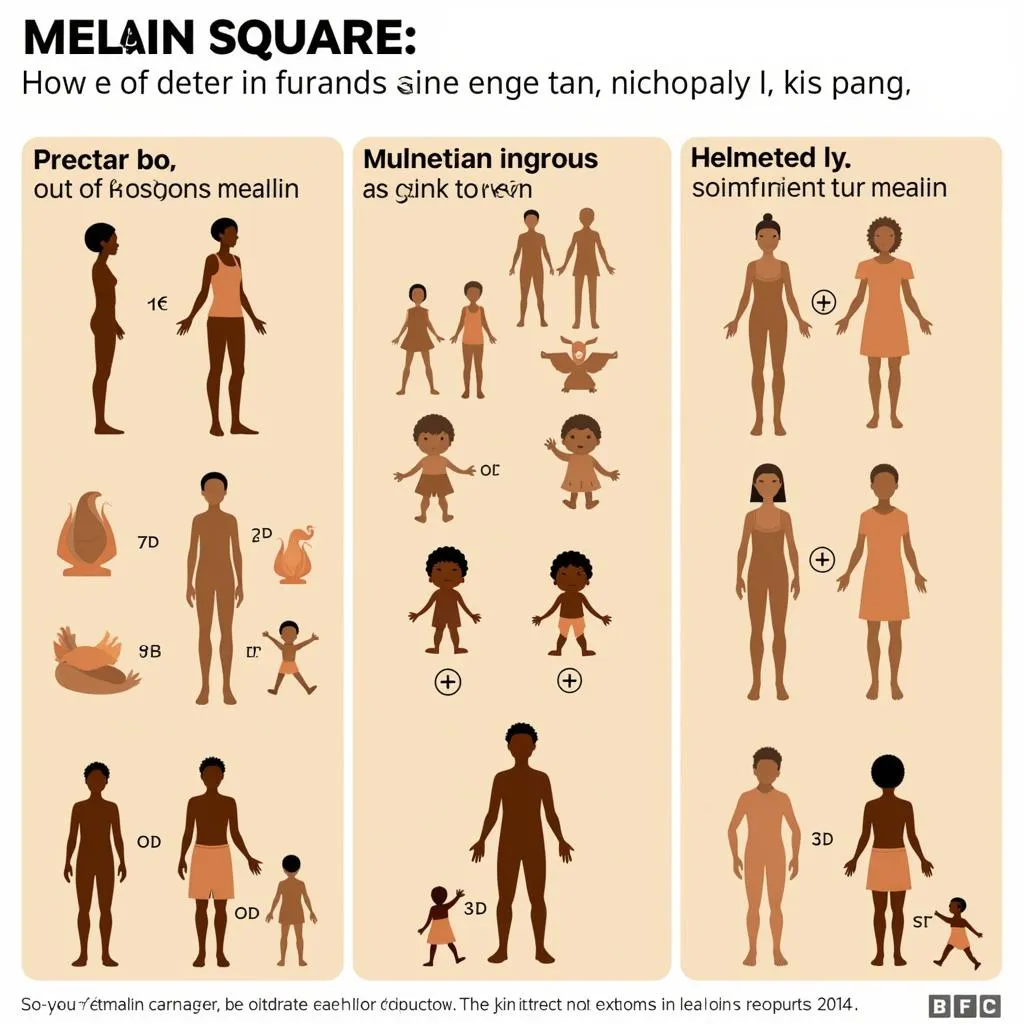Skin color is one of the most noticeable ways humans differ. But have you ever wondered what creates this diversity? The answer lies in our genes, the blueprint of life we inherit from our parents. Let’s explore how genes determine skin color and understand the fascinating science behind our unique shades.
Decoding the Genetics of Skin Color
While we often simplify inheritance, skin color, like many human traits, isn’t determined by just one gene but by a complex interplay of many genes, each carrying specific instructions for melanin production.
Melanin: The Pigment Powerhouse
At the heart of skin color variation lies melanin, a pigment produced by specialized cells called melanocytes. Think of melanin as a natural sunscreen, protecting our skin from the sun’s harmful ultraviolet (UV) rays.
There are two main types of melanin:
- Eumelanin: Responsible for brown and black hues.
- Pheomelanin: Produces reddish-yellow tones, contributing to freckles and red hair.
Everyone has different amounts and types of melanin, which contribute to the wide spectrum of skin tones we see.
Genes: The Master Orchestrators
Numerous genes, estimated to be in the hundreds, play a role in melanin production, each with its variations influencing how much and what type of melanin our bodies produce.
Imagine each gene variation as a volume knob. Some variations turn up the production of eumelanin, resulting in darker skin, while others turn it down, leading to lighter shades. The same applies to pheomelanin.
 Genetic Inheritance of Skin Color
Genetic Inheritance of Skin Color
Inheritance: Passing Down the Palette
We inherit two copies of each gene, one from each parent. These copies may carry the same variation or different ones. The combination of these variations, along with environmental factors, determines our unique skin color.
For example, if both parents contribute genes that favor high eumelanin production, their child is likely to have darker skin. However, if one parent passes down a gene variant for high eumelanin production and the other passes down a variant for lower production, the child’s skin tone will likely fall somewhere in between.
Beyond the Basics: The Complexity of Skin Color
The inheritance of skin color is far more intricate than a simple dominant-recessive model. It’s a fascinating example of polygenic inheritance, where multiple genes contribute to a single trait. Additionally, environmental factors like sun exposure can influence melanin production, further contributing to the diversity of skin tones.
Frequently Asked Questions
1. Why are some people fairer than others?
Variations in genes involved in melanin production lead to differences in the amount and type of melanin produced. People with fairer skin have gene variants that result in lower eumelanin production.
2. Can skin color change over time?
While our base skin color is determined by our genes, environmental factors like sun exposure can temporarily darken skin tone by increasing melanin production.
3. Is skin color related to geographic ancestry?
Historically, populations closer to the equator evolved darker skin to protect against intense UV radiation, while those in higher latitudes developed lighter skin to absorb more UV light for vitamin D production. However, it’s important to remember that skin color is a spectrum, and there is significant variation within populations.
Need More Information?
If you have more questions about skin color, genetics, or any related topic, don’t hesitate to contact us.
Call us: 0373298888
Email: [email protected]
Visit us: 86 Cầu Giấy, Hà Nội.
Our team of experts is available 24/7 to assist you.

